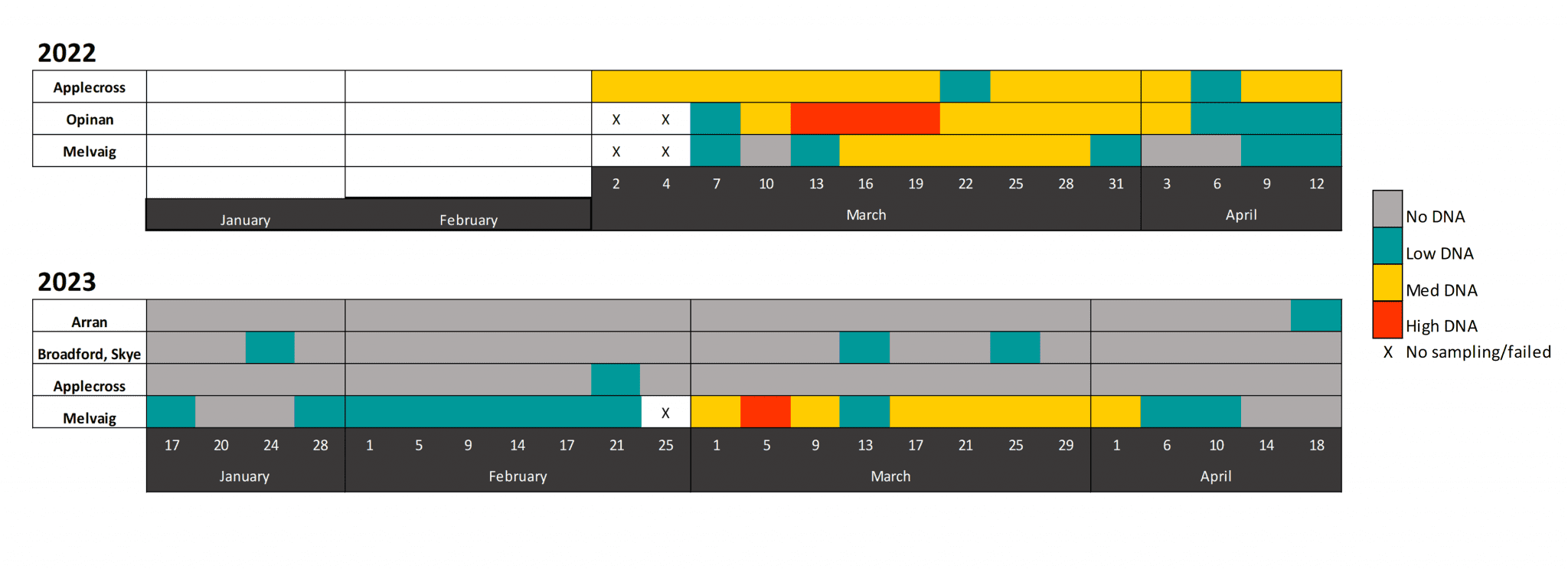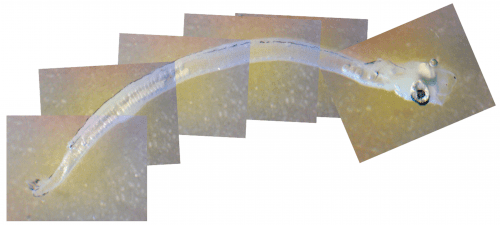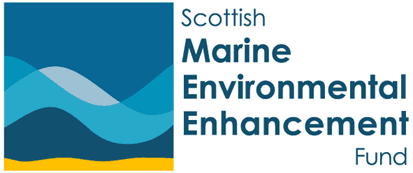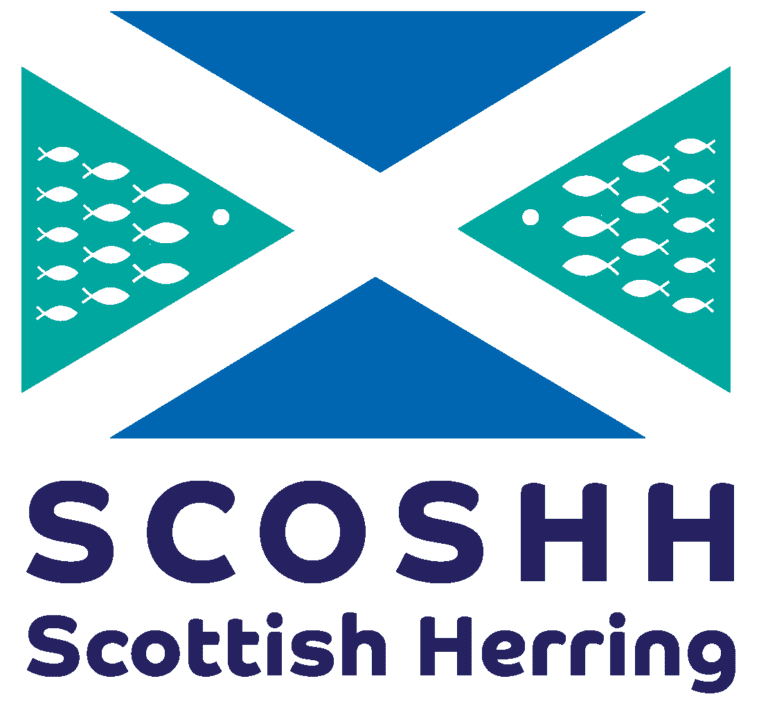WOSHH & WOSHH-eDNA-Sound results (so far)
Environmental DNA (eDNA)
The community-based eDNA sampling programme, conceived by WOSHH, first trialled in 2022 in Wester Ross (Applecross, South Erradale and Melvaig), in collaboration with the Wester Ross Fisheries Trust and local crofters, was very successful. This showed that shore-based sampling (as opposed to the typical method of collecting samples from a boat) reliably detects herring DNA. This is great news because it reduces the risks and costs of sampling.
In 2022, sampling was conducted every 3rd day between 1st March and 12th April (Figure 1). At all three study locations, herring DNA was present in most of the samples in that year.
In 2023, sampling was conducted between 17th of January and 18th of April at Arran (new site sampled by the Community of Arran Seabed Trust), Skye (new site sampled by the Skye and Lochalsh Rivers Trust), Applecross (2022 site) and Melvaig (2022 site) (Figure 1). The low amount of Herring DNA encountered in the water in January 2023 in Melvaig, compared to the high amount found in March 2023, indicates that the ‘sudden’ high amounts of DNA were likely from herring shoals coming inshore, rather than from ‘resident’ juvenile fish. At Arran, no Herring eDNA was found (except very low amounts on last sampling date), and likewise at Applecross, where herring DNA was abundant in 2022. Hence, marked inter-annual differences in herring presence at Applecross were detected by repetitive eDNA sampling, whilst in Melvaig Herring were present in both 2022 and 2023.

Figure 1. Presence/Absence results of the Herring eDNA sampling conducted by WOSHH and its partners at the Scottish west coast in 2022 and 2023.
Plankton sampling
In 2023, marine plankton samples were collected for WOSHH by the Wester Ross Fisheries Trust, near Gairloch, and the Community of Arran Seabed Trust (COAST) and by other community members from the Isle of Arran. No herring larvae were found by the Arran team, whereas a few confirmed herring larvae and several clupeids (unable to determine if sprat or herring) were found again off Melvaig (Figure 2).
The repeated finding of herring larvae in Wester Ross in both 2022/23, in conjunction with gathered local ecological knowledge and eDNA (and sound recordings) (see below) indicates that the Minch/Inner Sound is a spring-spawning herring hotspot.

Figure 2. Larva sampled off Melvaig, Wester Ross in 2023. © Dr Shraveena Venkatesh, Wester Ross Fisheries Trust.
Sound
To the best of our knowledge, no one has yet placed sound recorders during the herring spawning season for attempting to discover shoals. Discussing the topic with colleagues at the Scottish Association for Marine Science , who discovered the FRTs, we agreed it was worthy exploratory research.
With the help of local fishers, we deployed small sound recorders, called HydroMoths, at four locations in the Inner Hebrides and the Minch. The devices were programmed to record 2 minutes every 5 minutes (i.e., 7-minute cycle) around the clock for approximately 41 days. Whilst no herring FRTs have been detected as yet, the recorders captured a humpback whale calling for hours at night near the mouth of Loch Gairloch (listen below), as well as dolphin whistles and clicks (listen below) on days when a large amounts of herring eDNA was present in the water at the nearby Melvaig eDNA sampling site. The presence of a humpback whale, known to feed on schooling forage fish such as herring, is not common in the area this time of year and may have been linked to the presence of herring simultaneously observed nearby. It was the only whale(s) reported at the west coast that time of year. Either way, the recorders detected (predator) species typically co-occurring with herring shoals.
Listen to humpback whale calls:
Listen to dolphin whistles and clicks:



WOSHH and WOSHH-eDNA-Sound, led by Edinburgh Napier University, are supported by the William Grant Foundation and the Scottish Marine Environmental Enhancement Fund (SMEEF).
